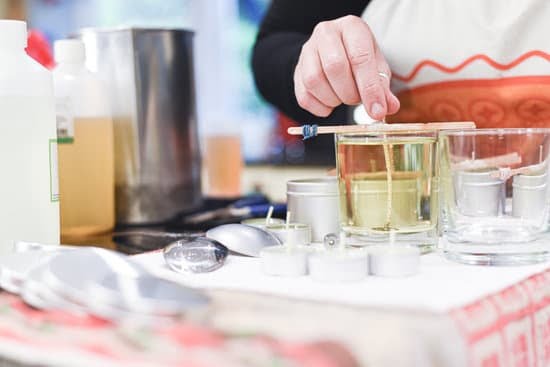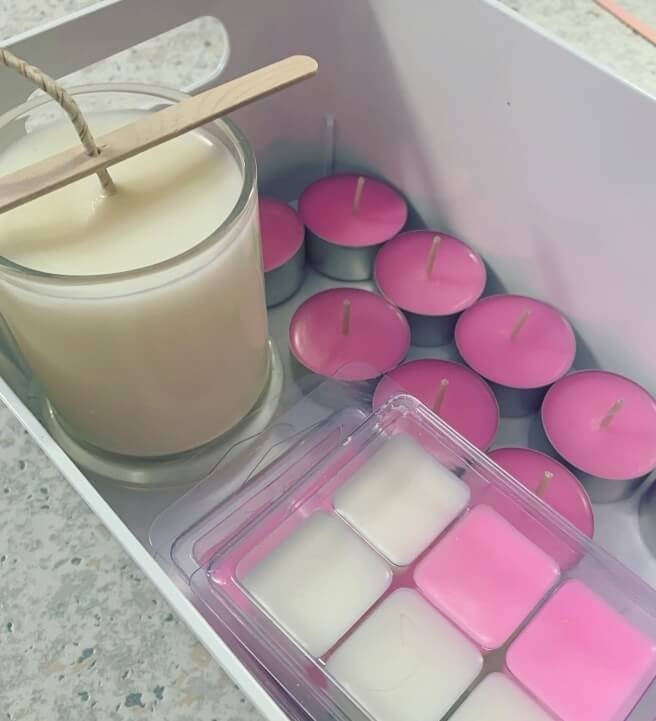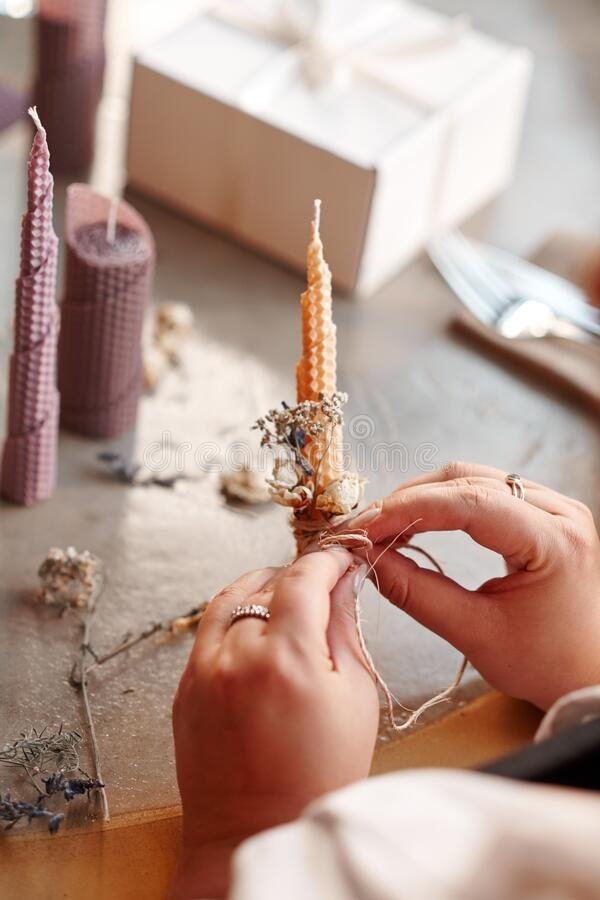Are you a candle maker frustrated by the appearance of unsightly holes in your homemade candles? If so, you’re not alone. Holes in candles can detract from their overall aesthetic and quality, leading to disappointment for both the maker and the consumer.
In this article, we’ll explore the common causes of holes in homemade candles and provide valuable tips on how to prevent them. By understanding the reasons behind these imperfections and implementing the right techniques, you can create beautiful, hole-free candles that will delight your customers.
Preventing holes in homemade candles is a crucial aspect of the candle making process. Whether you’re crafting candles for personal use or selling them to others, a flawless finished product is essential for customer satisfaction.
No one wants to purchase or receive a candle riddled with holes as it can affect its burn time, fragrance throw, and overall appeal. As a candle maker, it’s important to strive for perfection in every aspect of your craft, including preventing holes from forming during the creation of your candles.
The frustration caused by encountering holes in your homemade candles cannot be understated. Hours of hard work and creative effort can be thwarted by this seemingly small imperfection. However, with the right knowledge and techniques at your disposal, you can effectively prevent holes from appearing in your handmade candles.
In the following sections, we will delve into the intricacies of candle making to understand why these holes occur and explore practical solutions to ensure a smooth and beautiful finished product every time. Whether you’re a novice or experienced candle maker, these tips will help elevate your craft and deliver exceptional results.
Understanding the Causes of Holes
Candles are a popular DIY project, but one of the most frustrating issues for candle makers is discovering holes in their finished products. These unsightly imperfections can detract from the overall appearance of the candles and diminish their quality. Understanding the common causes of holes in candles is essential for preventing this issue and creating flawless homemade candles that are hole-free.
One of the primary reasons why holes can form in candles during the making process is improper wax temperature. If the wax is too hot when poured into the mold, it can create air pockets within the candle, leading to holes once it solidifies. On the other hand, if the wax is too cool, it may not fully fill the mold and result in uneven surfaces or gaps within the candle.
In addition to improper wax temperature, poor wick placement can also contribute to the formation of holes in candles. If the wick is not centered or straight within the mold, it can cause uneven distribution of wax as it solidifies, leaving behind voids that manifest as holes in the finished candle.
Ensuring that the wick is properly positioned before pouring the hot wax is crucial for preventing this issue and creating seamlessly smooth candles. Understanding these common causes of holes in candles will enable candle makers to take proactive measures to address them and produce high-quality products that are free from imperfections.
Choosing the Right Wax
When it comes to making candles, selecting the right wax is crucial to prevent the formation of unsightly and frustrating holes in the finished product. The type of wax used can greatly impact the quality of the candle, so it’s essential to choose a wax that is suitable for the specific type of candle being made.
One common cause of holes in candles is the use of improper or low-quality wax that does not perform well during the cooling process. To ensure hole-free candles, consider these important factors when choosing the right wax for your candle making endeavors.
First and foremost, it’s essential to select a high-quality, specifically formulated wax that is designed for the type of candle you intend to make. Different waxes have different melting points and properties, so choosing one that aligns with your desired candle style is crucial. For example, paraffin wax is commonly used for container candles, while soy wax is popular for its natural properties and clean-burning characteristics.
Beeswax offers a unique honey-like scent and texture that appeals to many candle makers as well. Each type of wax has its own set of advantages and considerations, so understanding their characteristics will help you make an informed decision.
Furthermore, pay attention to the color and appearance options available with different waxes. Some waxes are naturally creamy or have a yellowish hue, which can affect how dyes and fragrances appear in the finished candle. If aesthetics are important to you, consider this aspect when choosing your candle-making wax.
In addition to considering the performance and appearance aspects of different waxes, it’s also important to factor in any environmental or health considerations when making your selection. Many candle makers today seek out eco-friendly options like soy wax or beeswax due to their renewable and sustainable qualities.
Consider your personal preferences and values when choosing a wax that aligns with your environmental beliefs as well as delivers on performance. By carefully weighing these factors, you can select the right wax for your homemade candles that helps prevent holes from forming during the making process.
| Wax Type | Properties |
|---|---|
| Paraffin Wax | Highly versatile; suitable for container candles |
| Soy Wax | Natural; clean-burning; environmentally friendly |
| Beeswax | Naturally sweet scent; golden color; renewable source |
Proper Pouring Techniques
When it comes to making homemade candles, one of the most frustrating issues that candle makers face is the formation of holes in their creations. These unsightly blemishes not only affect the appearance of the candles but also impact their functionality. To prevent holes from forming in homemade candles, it is essential to employ proper pouring techniques when adding hot wax into the candle molds.
To keep candles from getting holes when making them, follow these detailed instructions on the correct way to pour hot wax into candle molds:
1. Choose the Right Wax: Selecting the appropriate type of wax is crucial in preventing holes in homemade candles. Be sure to use high-quality, well-refined candle wax that has been specifically designed for candle making.
2. Melt Wax at the Proper Temperature: Before pouring hot wax into candle molds, ensure that the temperature of the melted wax is within the recommended range for the type of wax being used. Overheating or underheating the wax can lead to issues such as air bubbles and surface imperfections.
3. Slow and Steady Pouring: When pouring hot wax into candle molds, do so slowly and steadily to prevent air pockets from forming, which can ultimately result in holes in the finished candles. Avoid splashing or spilling any excess wax during this process.
By following these detailed instructions for proper pouring techniques when making homemade candles, you can significantly reduce the likelihood of encountering issues such as holes in your finished products. Additionally, taking care to select high-quality materials and maintain proper temperatures throughout the candle making process will contribute to producing flawless, hole-free candles that you can enjoy or give as gifts with confidence.
Wick Placement and Sizing
When making homemade candles, choosing the right wick size and properly positioning it in the candle are crucial steps in preventing holes from forming. The size of the wick determines how much fragrance is released and how quickly the wax melts, while proper positioning ensures an even burn and reduces the risk of holes. Here’s a look at why wick selection and placement are significant in keeping candles hole-free.
The size of the wick plays a critical role in determining the burn time and fragrance throw of the candle. A wick that is too small may not be able to melt the entire surface of the wax, leading to uneven burning and potential holes in the center.
On the other hand, a wick that is too large can cause excessive flickering, smoke, and overheating, which can also result in unsightly holes. Therefore, it is essential to carefully consider the type of wax and container being used when selecting the appropriate wick size for your homemade candles.
Furthermore, proper wick placement is equally important in preventing holes from forming in candles. Placing the wick too close to the edge of the container can cause uneven burning and potentially create holes along one side of the candle. Additionally, if the wick is not centered during pouring or if it moves as the wax solidifies, it can lead to an off-center burn that may result in tunneling or eventually creating a hole through which air passes uncontrollably.
| Wick Size | Importance |
|---|---|
| Proper Size Selection | Determines burn time and fragrance release |
| Correct Placement | Prevents uneven burning and reduces risk of holes |
Temperature Control
Importance of Temperature Control
Maintaining the proper temperature throughout the candle making process is crucial in preventing holes from forming in homemade candles. Fluctuations in temperature can lead to uneven cooling, which can result in the formation of holes or sinkholes in the finished product. It is essential for candle makers to understand the role of temperature control and take necessary precautions to ensure that their candles turn out smooth and free from imperfections.
Tips for Maintaining Ideal Temperature
One of the most important factors in temperature control during candle making is ensuring that the wax is heated and cooled at the right temperatures. Different types of wax have specific heating and cooling requirements, so it’s important to follow the manufacturer’s guidelines for optimal results. Additionally, using a reliable thermometer to monitor the wax temperature at all stages of the process can help prevent overheating or underheating, both of which can lead to hole formation.
Another tip for maintaining ideal temperature is to work in a draft-free environment. Sudden changes in air flow can affect the rate at which the wax cools, potentially causing issues like cracking or holes. By working in a controlled environment with minimal air movement, candle makers can help ensure that their candles cool evenly and without imperfections.
Precautions for Temperature Changes
It’s also important for candle makers to be mindful of external factors that could impact temperature control. For example, if working in a hot climate, it may be necessary to adjust cooling times or use additional measures, such as refrigeration, to prevent premature solidification.
Conversely, when working in cooler temperatures, extended cooling times or slightly elevated pouring temperatures may be required to achieve optimal results. By understanding how environmental conditions can affect temperature control, candle makers can make necessary adjustments to prevent holes from forming during the candle making process.
By paying careful attention to temperature control and implementing these tips, candle makers can significantly reduce the likelihood of holes forming in their homemade candles.
Quality Assurance
During the Making Process
During the candle making process, it is crucial to inspect the candles at various stages to ensure that they are free from any holes or imperfections. As the wax is melting and being poured into molds, be sure to keep an eye on the consistency and temperature of the wax.
Any sudden changes or irregularities could result in the formation of holes in the candles. By paying close attention throughout the process, you can catch any potential issues early on and take necessary corrective measures.
After Making Process
Once the candles have been made and have had time to cool and set, it is important to thoroughly inspect them for any signs of holes or blemishes. This can be done by carefully examining each candle, both visually and by running your fingers along their surface to feel for any abnormalities.
In addition, lighting the candles and observing them as they burn can also help identify any hidden imperfections that may not be immediately visible. By conducting a comprehensive inspection after the making process, you can ensure that only high-quality, hole-free candles make it to market or into your home.
Tips for Quality Assurance
To further guarantee that your homemade candles are free from holes, consider implementing quality control measures such as using a checklist for visual inspections, keeping detailed records of temperature and pour times, and conducting burn tests on sample candles. These practices will help you identify any recurring issues in your candle making process and make necessary adjustments for future batches.
By emphasizing quality assurance through thorough inspections during and after the making process, you can produce flawless candles that meet high standards of craftsmanship.
By adhering to these quality assurance practices when making homemade candles, you can significantly reduce the likelihood of encountering holes in your finished products. Through careful monitoring and meticulous inspection at every stage of the process, you can maintain consistent quality and ensure customer satisfaction with each handcrafted candle.
Troubleshooting
When making homemade candles, it can be frustrating to encounter holes in the finished product. These unsightly imperfections can diminish the overall quality of the candles and may even affect their burning performance. Fortunately, there are several steps that candle makers can take to prevent holes from forming during the making process.
One common cause of holes in candles is improper wax temperature. If the wax is too hot when poured into the mold, it can create air pockets that result in holes once the candle has cooled. To avoid this issue, it’s important to carefully monitor the temperature of the wax and ensure that it is within the recommended range for pouring.
Another factor that can contribute to holes in candles is poor wick placement. If the wick is not positioned correctly within the mold, it can create uneven burning and lead to airflow issues that result in holes. Choosing the right wick size and properly positioning it in the center of the candle are essential steps in preventing this problem.
In addition to these common causes of holes in candles, there are other potential issues that may arise during the candle making process. By understanding these factors and implementing effective troubleshooting techniques, candle makers can address any issues that may lead to holes and ensure a high-quality finished product.
- Check wax temperature before pouring
- Properly position wick in center of mold
- Inspect candles for holes after cooling
By following these troubleshooting tips and addressing any potential issues that may lead to holes in candles, you can maintain consistent quality in your homemade creations. How to keep.candles.from.getting holes when making.the.com while ensuring a smooth and beautiful finish for your homemade candles.
Conclusion
In conclusion, preventing holes in homemade candles is crucial for candle makers to ensure the quality and longevity of their products. The frustration caused by these imperfections can be avoided by following the tips and techniques outlined in this blog post. By understanding the causes of holes, choosing the right wax, using proper pouring techniques, positioning wicks correctly, controlling temperature, ensuring quality assurance, and troubleshooting common issues, candle makers can significantly reduce the likelihood of encountering holes in their creations.
Understanding the causes of holes is essential in addressing this issue. It can be attributed to factors such as improper wax temperature, poor wick placement, or using the wrong type of wax. Choosing the right wax for candle making plays a significant role in preventing holes from forming. By selecting the appropriate wax for a specific type of candle, candle makers can greatly minimize the risk of encountering this problem.
Additionally, proper pouring techniques and temperature control during the manufacturing process are crucial in preventing holes from developing in candles. It is equally important to carefully inspect candles during and after completion to ensure they are hole-free. By following these guidelines and paying close attention to detail throughout each stage of candle making, individuals can create high-quality candles without worrying about encountering undesirable holes.
Following these tips on how to keep candles from getting holes when making them will ultimately lead to a more positive and successful candle-making experience. With attention to detail and adherence to best practices, candle makers can produce flawless creations that are free from imperfections like unsightly holes.
Frequently Asked Questions
Why Is My Candle Making a Hole in the Middle?
A common reason why a candle may make a hole in the middle is that it was not properly cooled and set. When the wax cools too quickly, it can create a hole as it shrinks in the center, leaving empty space.
This can also occur if the wax used has a high melting point, causing uneven cooling and creating a hole.
How Do You Prevent Candle Holes?
To prevent candle holes, it is important to allow the candle to cool and set at a steady pace. This can be achieved by pouring the wax at the correct temperature and avoiding drastic changes in temperature during setting. Using waxes with lower melting points can also help prevent holes from forming.
How Do You Prevent Air Pockets When Making Candles?
Air pockets in candles can be prevented by pouring the wax carefully and slowly into the mold, allowing any trapped air to escape. Additionally, gently tapping the mold on a surface after pouring can help release any remaining air bubbles.
Using a heat gun or hairdryer to warm the surface of the poured wax can also help eliminate air pockets before they form.

Welcome to my candle making blog! In this blog, I will be sharing my tips and tricks for making candles. I will also be sharing some of my favorite recipes.





